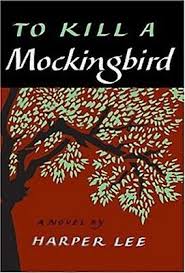
MONROEVILLE, Ala. (AP) — Harper Lee’s novel “To Kill a Mockingbird” is always nearby in the southwest Alabama town of Monroeville.
The quiet city is the birthplace and current home of the 89-year-old author, and it inspired the fictional town of Maycomb in her Pulitzer Prize-winning book about race and injustice in the Deep South of the 1930s.
And with the “Mockingbird” sequel “Go Set a Watchman” just days away from publication, Monroeville has sites aplenty that draw fans searching for remnants of that “tired old town” where attorney Atticus Finch defended a wrongly accused Tom Robinson while Finch’s children Jem and Scout watched from the courtroom balcony.
There’s a Mockingbird Inn and a restaurant named for Boo Radley, the recluse-turned-hero in the book. Both fill up with visitors each spring when the community puts on a stage adaption of “Mockingbird” that draws visitors worldwide.
Also, bronze statue on the courthouse square and a wall-size “Mockingbird” mural on the side of a building are constant reminders of the town’s claim to fame.
But all those things are based on the book, not part of it. There are other spots around town that actually helped make “Mockingbird,” released 55 years ago.
Start at Mel’s Dairy Dream on South Alabama Avenue, a busy main road in the town of 6,300 people, and walk north toward the square.
The small block restaurant, ringed by service windows and a counter where customers plop down money for ice cream cones, stands on the site of Lee’s childhood home, which was torn down decades ago. Mel’s is just a short walk from the school where Lee attended classes and, by extension, her alter-ego Scout and Jem began their “longest journey together” at the book’s climax.
Lee shared the old house with siblings, her mother and father A.C. Lee, an attorney and Alabama legislator who was the basis for Atticus Finch. Finch returns in “Watchman” as his daughter goes home to Maycomb 20 years later as an adult to the town that shaped her, according to the publisher.
Next door to Mel’s and across a weathered stone fence is a grassy lot with the remains of a house foundation and a historic marker that recalls the site as the one-time home of author Truman Capote, Lee’s childhood friend and the inspiration for the character “Dill” in Mockingbird. As adults, the two collaborated on Capote’s classic crime story “In Cold Blood,” published in 1966.
The homes of Lee’s – and Finch’s – neighbors are long gone, replaced by parking lots and stores, and the paved street is no longer shaded by big trees or transformed by rain into “red slop,” as Lee described in the book.
But the courthouse and jail that recall pivotal moments in “Mockingbird” are still less than a half-mile away on the courthouse square.
Now a museum, the old Monroe County Courthouse was completed in 1903 and is home to the balconied courtroom that served as the model for the crucial legal scene in the film version of “To Kill a Mockingbird.” A tall white dome tops the building; magnolia trees shade the lawn outside.
Inside, visitors can walk across the shiny wooden floor and sit in the old witness chair where Robinson, who was black, would have defended himself against false charges of raping a white woman before an all-white jury. A pot-bellied stove stands beside the jury box. The jail where Atticus would have protected Robinson from a lynch mob is now an office across the street.
In the atrium outside the courtroom, part of a gnarly old tree trunk taken from near the original Lee home site is encased in plastic. With a notch in the side, the log evokes the knotty hardwood where Boo Radley emerged from his spooky, rundown home to leave gifts for Scout and her brother in “Mockingbird.”
Radley was believed to be based on a seldom-seen neighbor of the Lees, Alfred Boulware, who died in 1952 and is buried in the same cemetery as Lee’s father, who died in 1962. The graveyard is beside the town’s United Methodist Church, just a few blocks from the courthouse.
And Lee is in town, too, “although very quiet,” as she wrote in 1993. Mostly deaf and blind, the author spends her days in an assisted living home in Monroeville.
Recently, Lee attended a luncheon at the downtown restaurant Prop and Gavel, which is owned by her lawyer and the attorney’s husband. Lee received the first copies of her new book from the publisher and chatted with well-wishers.
But mostly, like Boo, she is seldom seen around town.
—
If You Go…
MONROEVILLE, Alabama: Located halfway between Alabama’s capital of Montgomery and its seaport city of Mobile, about 25 miles west of Interstate 65, the nearest major highway.